Sharkmuffin’s press posse describes the trio as “badass riot grrl.” And there’s no question that the sonic storm generated by Tarra Thiessen (guitar, lead vocals, theremin, keyboards), Natalie Kirch (bass, vocals), and Janet LaBelle (drums) slams through the speakers with enough punk intensity and sharpened hooks to draw favorable comparisons with the Yeah Yeah Yeahs, Hole, Bikini Kill, and the Breeders—trailblazing alt-rock bands with strong female leads.
But listen to the four songs on the band’s latest EP, 1097, and it doesn’t take long to hear that there’s more than bad-assitude behind Sharkmuffin’s crunching riffs, thundering drums, and punk-simple bass lines. The band’s kick-to-the-stones ferocity amplifies solid songwriting, while Thiessen’s noise-rock fretboard assaults are balanced by nuanced technique. Amidst the noise, there’s plenty of cleverly applied tones and expressive dynamics.
A few weeks before a trip to Los Angeles to put the finishing touches on Sharkmuffin’s full-length debut album, Thiessen checked in from Brooklyn and explained how noise rock can coexist with the study of music theory, an appreciation for Van Halen, and a love of Pink Floyd—and why neither “riot” nor “grrl” tell the whole story.
so it’s always there.
How would you describe Sharkmuffin’s sound?
I guess like “psych-punk-surf?” I don't know! It’s like you just start stringing so many words together that you need to think of new words for it. I really like Ty Segall and Thee Oh Sees—they’re garage bands from San Francisco that have that “blown-out speaker” sound with catchy riffs and catchy melodies. But you can’t really hear the words they’re saying all that well because they’re so distorted. I wanted the sound to be less distorted so you can hear what I’m saying, while still being noisy.
Was that always your musical goal?
That’s a more recent thing, I think, from the last couple years of what Sharkmuffin turned into. I listen to my stuff from a couple years ago and it’s more classic rock “jammy” college stuff. I met Natalie the summer after I graduated college and she didn’t really know how to play yet. But that was fine because I wanted to be in a punk band. I like her style because she hasn't been playing that long, so it’s more basic, which is easier to follow and write stuff on top of. And it's more fun too.
Our sound and approach have changed as we’ve developed as a band. Our original drummer left and Janet LaBelle joined us in October. She’s out with an arm injury but we’re hoping she can finish the album with us when we go to L.A. in July. Patty Schemel from Hole stepped in and recorded with us in February.
Do you and Natalie write together?
For our first EP, She-Gods of Champagne Valley, the songs were written in my previous two bands and Natalie just learned those. On the new EP and album, we’ve done more jamming and writing together. “Soft Landing” came out of a bass line that Natalie wrote. We jammed a lot of the songs on the new album at her family’s beach house in New Jersey, which was destroyed by Hurricane Sandy. We named the EP 1097 after it [based on the beach house's address].
YouTube It
This extended video features all four tracks from Sharkmuffin’s current EP, 1097. Check out the expressive surf-guitar solo outro starting at 1:21 and lasting until the end of the first track, “Foul Play.”
When did you start playing guitar?
My stepdad was a bass collector. He had about 30 different basses that I sort of jammed on when I was younger. I think it was Jack White who made me really want to start playing the guitar, after I heard “Fell in Love with a Girl.” I was in high school, so I just learned a bunch of Led Zeppelin, Pink Floyd—I like David Gilmour—and stuff like that.
Classic rock? That might surprise some of your listeners….
I’m more into noisy stuff now. I have lots of pedals and I like everything to be really loud. I really like surf rock. In high school, this one Ventures CD was stuck in my car stereo, so I listened only to them for a whole summer: The Ventures and Dick Dale. I love the Velvet Underground sound, too. I listened to Side B of Velvet Underground & Nico every day for a couple of months in college. I also really like [German experimental rock band] Can. I like their guitar parts. Then there’s this band called the Mallard—they were kind of more post-punk, noisy, with this girl guitar player that I thought was pretty sweet, Greer McGettrick.
While recording Sharkmuffin’s latest EP, 1097, at Audio Parlour in Brooklyn with engineer Kevin Andreas, Tarra Thiessen played a Fender Jaguar HH through her 1966 Fender Pro Reverb. Thiessen gets her noise fix from Death by Audio pedals. Photos by Jaime Schultz.
How long have you been writing songs?
I tried writing songs when I first started playing guitar in middle school, but I could never get myself to finish them. I always had really bad anxiety about finishing songs until I was about 19 and I started singing—then I started writing and finishing them. But I’ve had a journal since I was 11 and have always written things down, sort of as a release. I was always depressed when I wasn’t writing.
Interesting that you’re drawing from something as personal as a journal and then cranking it up to be loud and in your face.
There’s a lot of rage—controlled rage—in it. I guess it’s my ex-boyfriends pissing me off [laughs]. I’m really into storytelling. A song like “Mermaid Sex Slave” [from She-Gods of Champagne Valley]is kind of mythical and a bit jokey—just a stupid story that I made up. It’s more interesting to take my actual autobiographical experiences and make those into stories and songs.
Is there an essential piece of gear in your arsenal?
I use lots of Death By Audio pedals. During college, I had this band and the bass player lived in the loft behind Death By Audio [in Brooklyn, New York], and they built all the pedals there. So that’s how I first started playing with them—being in my practice space alone and playing around with the pedals. I’ve become friends with the guys who make them.
Do you work out parts and sounds ahead of time?
It depends on the song. On “Ten Ten,” that noise thing was such a spur of the moment idea. I asked Natalie what time it was, and she just screamed “10:10!” And our drummer just did this hardcore beat. It was a joke, an in-the-moment kind of thing. We ended up turning it into something because we thought it was so funny. I also played a theremin on that—I have a bunch of guitar pedals that I don’t use in my setup, so I use my theremin with them.
Other songs, like “Foul Play,” are more controlled. If you see me play live, I have three different pedals that I use to control dynamics. I don’t really know where that comes from. I guess for different parts I want to be louder and more in your face, as opposed to other parts where you just want to communicate your words.
Tarra Thiessen’s Gear
Guitars
2009 Fender Jaguar Special HH Version
Amps
1966 Fender Pro Reverb
Effects
Death by Audio Fuzz War
Death by Audio Interstellar Overdriver
Death by Audio Echo Dream
Seymour Duncan SFX-07 Shape Shifter Tremolo
Boss DD-6 Digital Delay
Boss RE-20 Space Echo (for vocals)
Strings and Picks
Augustine Spectra Light Electric strings (.010–.046)
Dunlop Gator Grip 1.14 mm picks
How did you approach the production of 1097?
We recorded at Audio Parlour in Bushwick [Brooklyn] with Kevin Andreas, and tracked the bass and drums to 2" tape, which sounded great. I played my Fender Jaguar HH through my 1966 Fender Pro Reverb. “Quarter Machine” and “Soft Landing” were pretty basic—mainly just the Jaguar through my Death By Audio Interstellar Overdriver and the Pro Reverb. “Ten Ten” has three different guitar tracks laid over each other, where I was just sort of improvising along with two theremin tracks.
Do you play any other instruments?
I play bass and I can sort of play keyboard. I have a Bachelor’s of Music degree in Music Business [from NYU]. I took four years of music theory, oral comprehension, and music history, so I know a lot of boring classical stuff—and some really interesting classical stuff, too. We also had to take recording classes and there was an option to take lessons, so I did voice lessons and guitar lessons towards the end.
Do you have a set writing or practice regimen?
I definitely try to write a song every day, or try to work out parts for songs. I have to go through a lot of crappy ideas to get to the decent ones. Last winter, I learned a lot of Van Halen solos—so I go through phases where I want to learn new licks and try different stuff because I get bored with my soloing. When I don’t have a boyfriend, I always sleep next to my guitar, so it’s always there.
It seems like the only difference in being a female is that we always need to specify that we’re female—that's the only problem. It’s kind of annoying, because I’ll never be on a “Best Guitar Players” list ... I’ll be on a “Best Female Guitar Players” list. Women have been playing rock music for a long time now, so it really shouldn't have to be differentiated anymore: It’s not new.



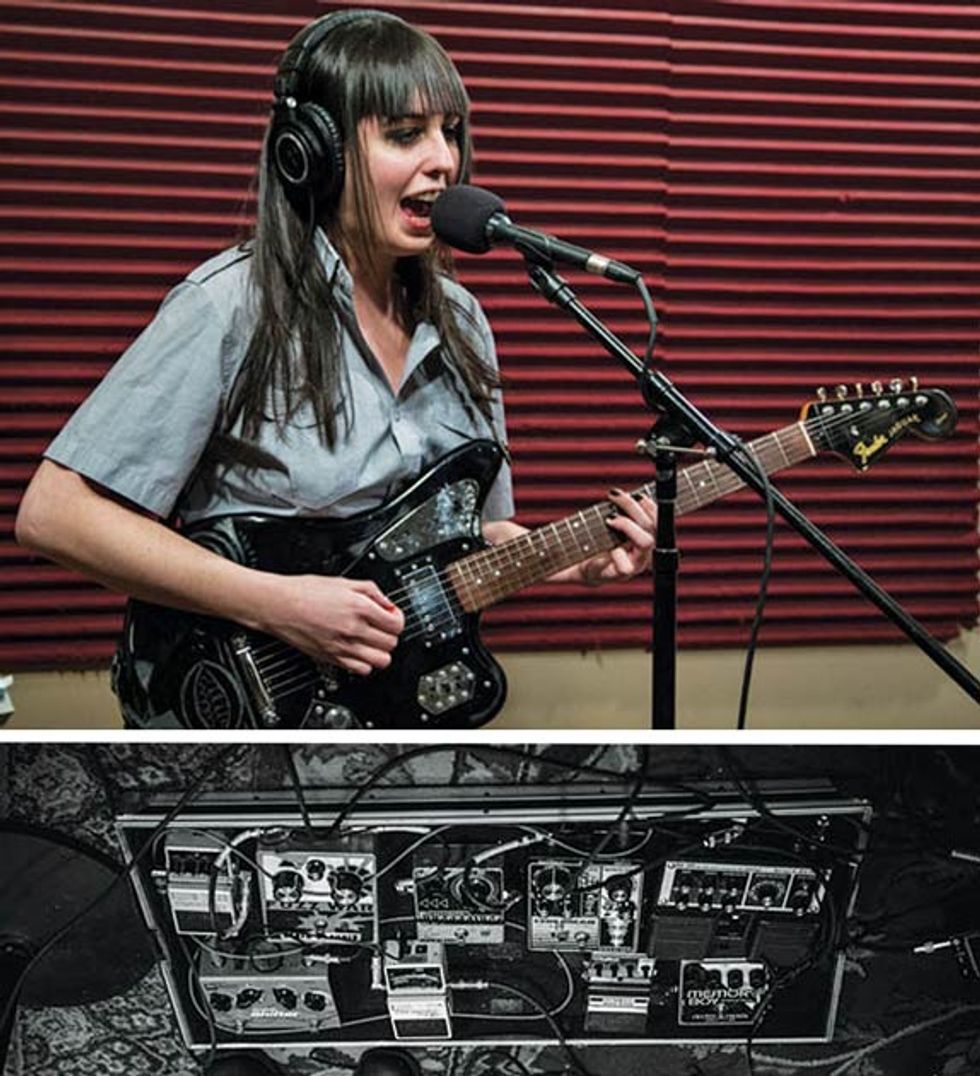
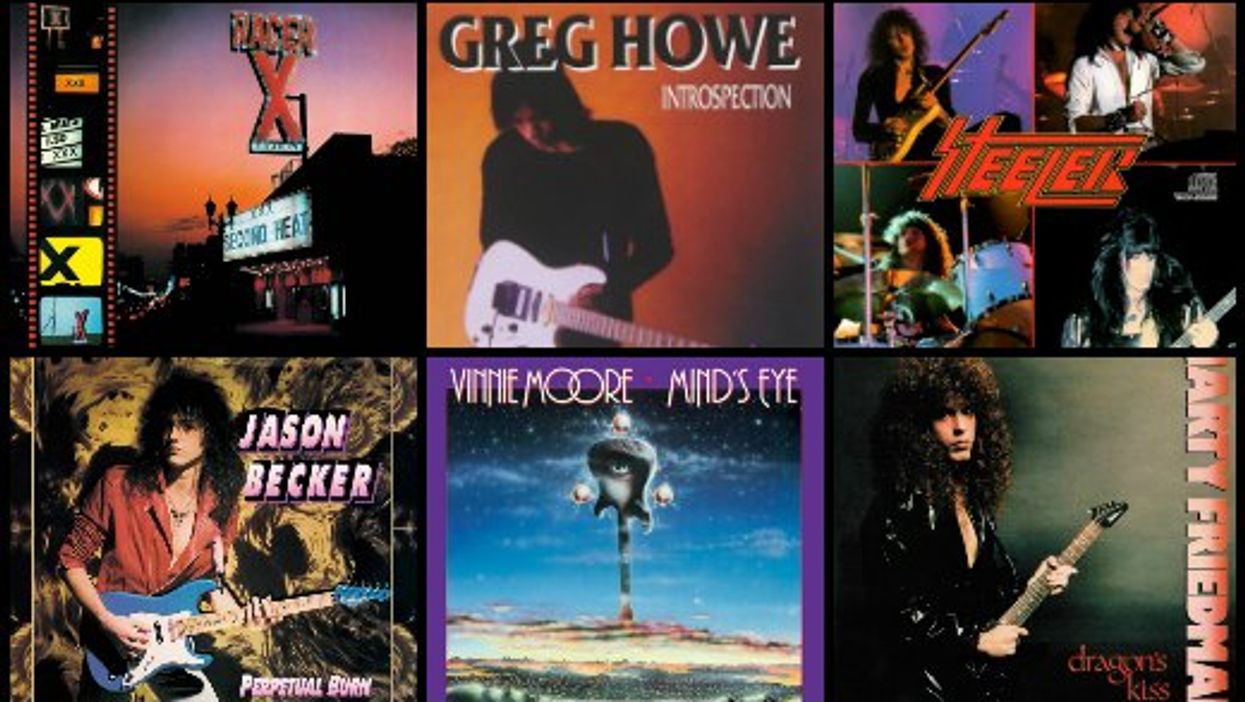
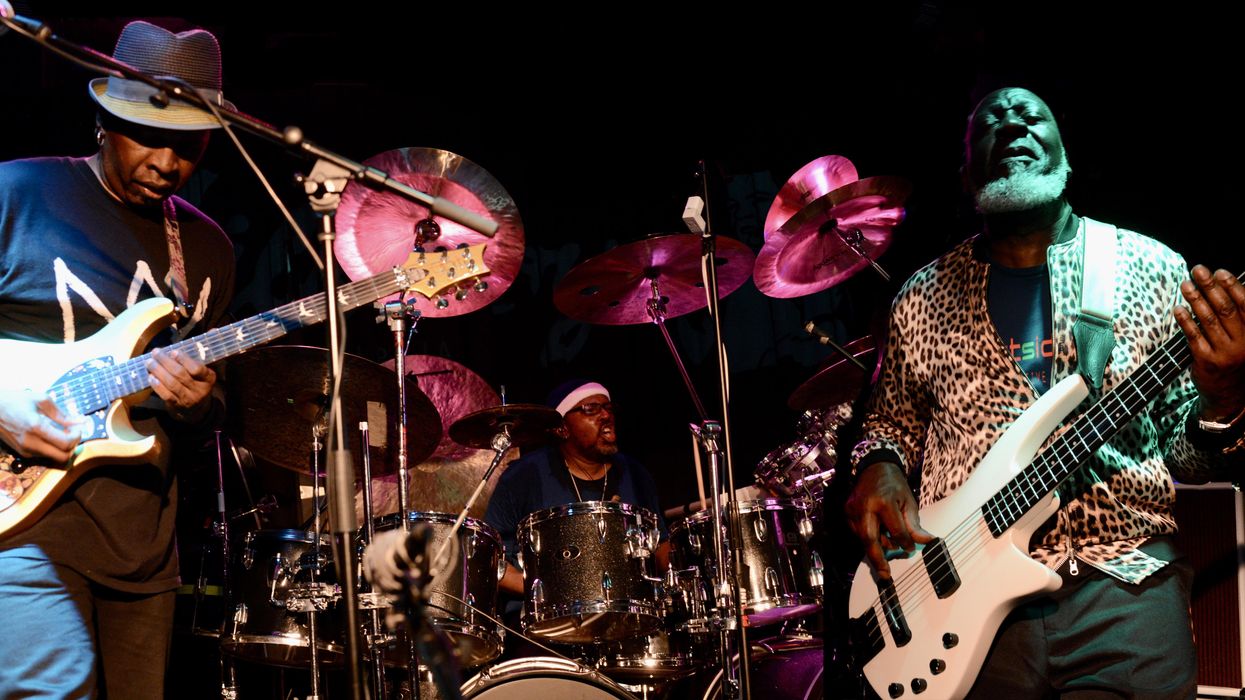



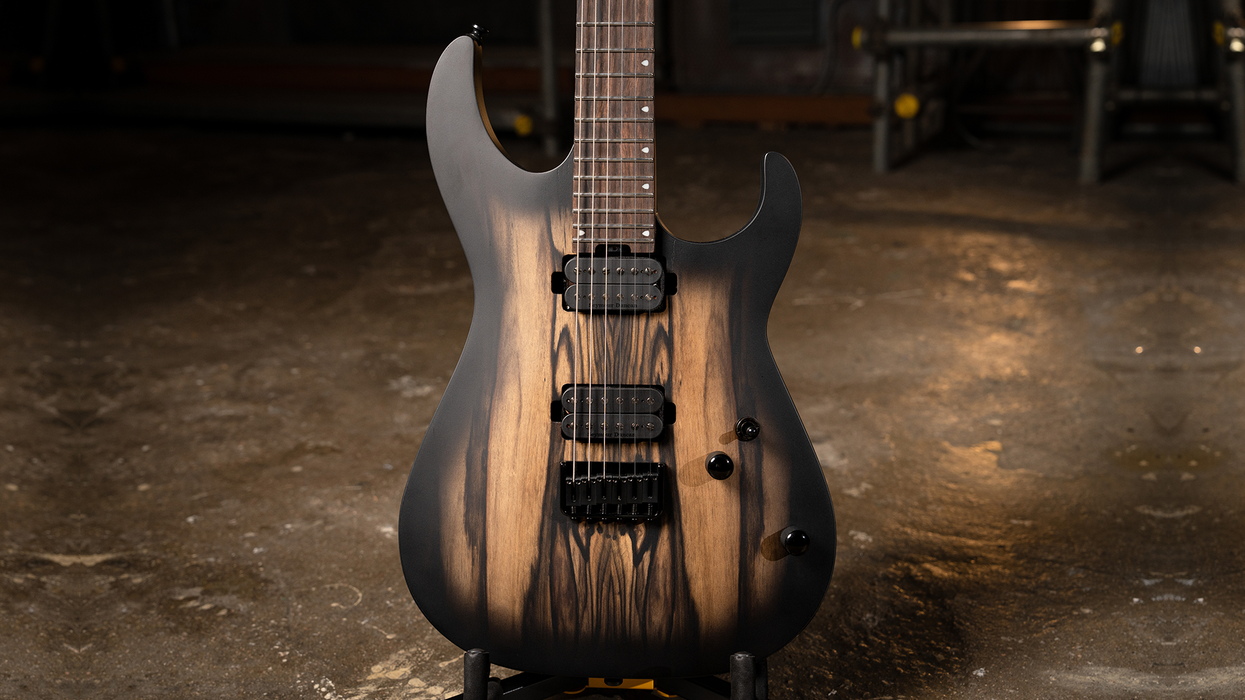



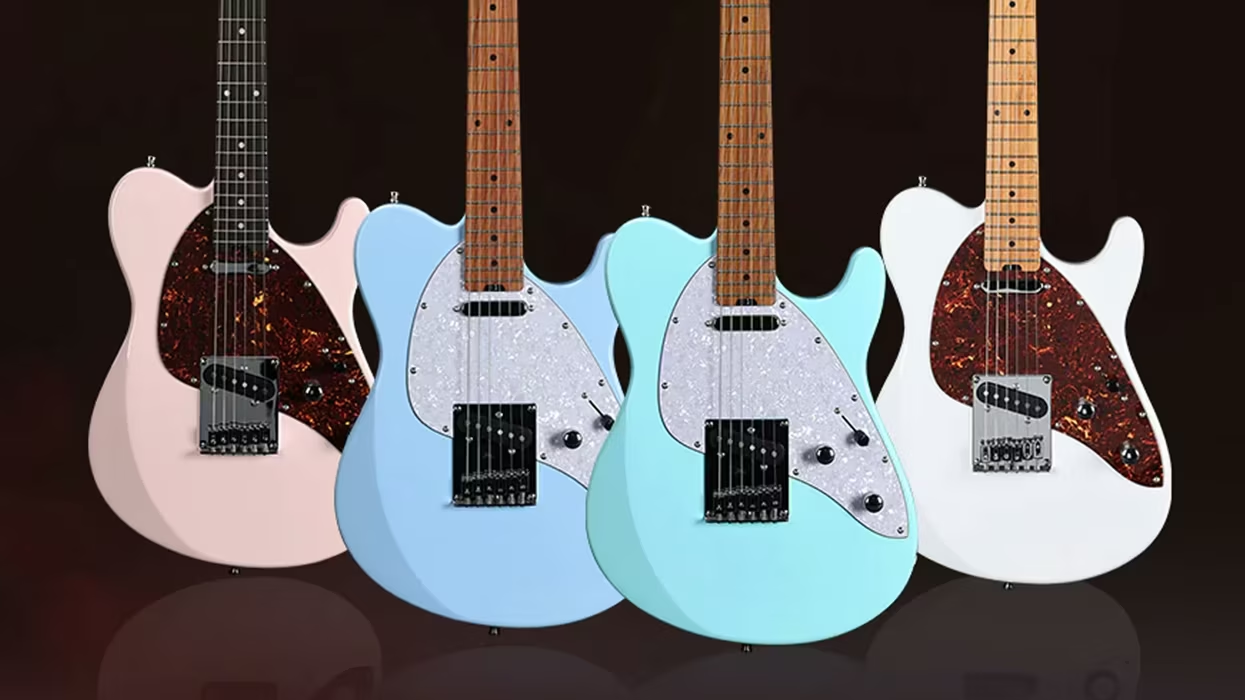
![Rig Rundown: Russian Circles’ Mike Sullivan [2025]](https://www.premierguitar.com/media-library/youtube.jpg?id=62303631&width=1245&height=700&quality=70&coordinates=0%2C0%2C0%2C0)










![Rig Rundown: AFI [2025]](https://www.premierguitar.com/media-library/youtube.jpg?id=62064741&width=1245&height=700&quality=70&coordinates=0%2C0%2C0%2C0)




















 Zach loves his Sovtek Mig 60 head, which he plays through a cab he built himself at a pipe-organ shop in Denver. Every glue joint is lined with thin leather for maximum air tightness, and it’s stocked with Celestion G12M Greenback speakers.
Zach loves his Sovtek Mig 60 head, which he plays through a cab he built himself at a pipe-organ shop in Denver. Every glue joint is lined with thin leather for maximum air tightness, and it’s stocked with Celestion G12M Greenback speakers.











